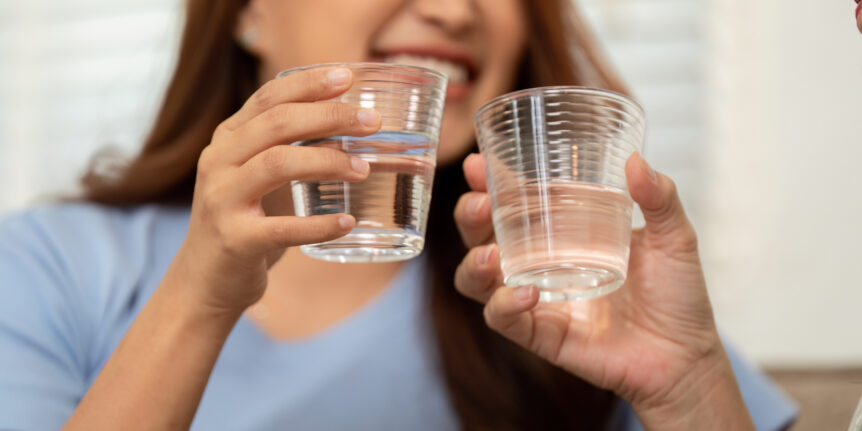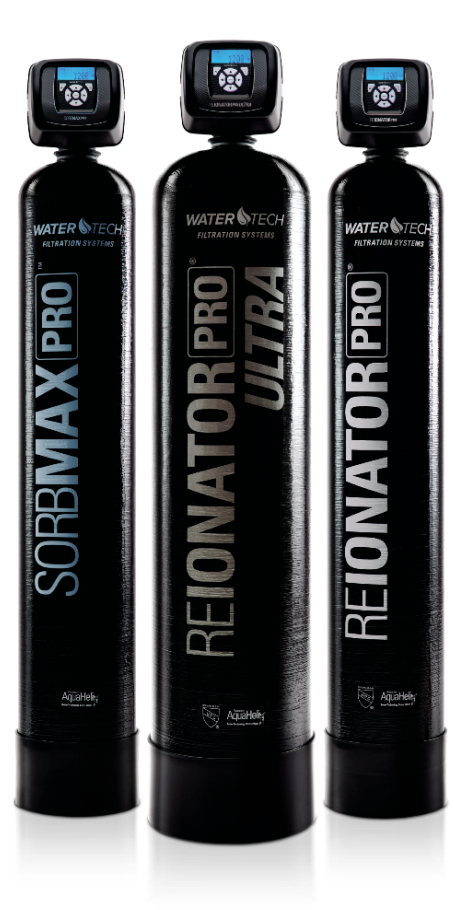| Key Takeaway:
If the goal is to lower measured hardness (gpg), choose softening; if the goal is to make scale less stubborn on surfaces, conditioning can help. |
Hardness and scale are connected, but they are not the same problem. Hardness refers to dissolved calcium and magnesium in the water, usually expressed in grains per gallon (gpg). Scale is the solid mineral that forms on glassware, fixtures, and heat-transfer surfaces inside equipment. Sorting out which outcome you care about—lower gpg, easier cleanup, or both—leads directly to the right technology.
This guide explains, in plain language, how softening and conditioning differ, where each one shines, and how whole-home carbon and point-of-use reverse osmosis fit into a complete setup. You’ll also find practical notes on testing, sizing, installation, and care so the solution you pick matches the water you have and the results you want.
What softening actually changes
Softening removes hardness minerals from the water stream. In an ion-exchange softener, resin beads trade sodium or potassium for calcium and magnesium. The exchange reduces the hardness number on a test, which limits new scale formation in plumbing and equipment, improves soap performance, and typically reduces the amount of detergent needed for everyday cleanup and laundry.
Because softening changes the water itself, its benefits show up across the whole home: fewer spots on glassware, less film on shower doors, more predictable lather and rinse, and steadier operation of water-using appliances. Models differ in capacity, controls, and regeneration strategy; matching those details to your hardness level and household use is what keeps performance consistent within the softener lineup.
What “salt-free” conditioning actually changes
Conditioning does not reduce hardness; it alters how minerals crystallize and stick. Media encourage calcium and magnesium to form crystals that are less prone to adhesion. This can make routine cleaning simpler on glass and fixtures, especially where hardness is moderate and the main complaint is cosmetic spotting rather than soap behavior or internal scale.
The hardness number on a test remains the same with conditioning, so soaps and detergents still behave as they do in hard water. For this reason, many households treat conditioning as a complement rather than a replacement—useful for surface management—while softening handles the mineral load. Options for this role appear among salt-free choices.
Which solves your problem? (use-case guidance)
If you need fewer deposits throughout the house and better soap performance, softening is the right first step. Lowering gpg addresses the root cause of scale, reduces the effort needed for cleaning, and protects water-using equipment from mineral accumulation on heat-transfer surfaces.
If your priority is easier wipe-off on glass and tile—and you are not trying to change gpg—conditioning can help. Think of it as a surface-behavior tool rather than a water-chemistry change. Homes often layer solutions: softening for hardness, carbon for taste and odor across every tap, and under-sink reverse osmosis for drinking and cooking.
Testing: the simple numbers that drive decisions
Hardness is primarily calcium and magnesium picked up as water moves through soil and rock. It’s measured in grains per gallon, and even modest levels can change how soaps behave and how quickly film builds on surfaces. Because utilities and seasons can influence disinfectant levels, checking for chlorine or chloramine alongside hardness is helpful when you care about taste and odor.
A short water test provides three inputs you’ll actually use: your gpg, whether chlorine or chloramine are present, and an estimate of daily gallons. With those in hand, you can size resin volume and regeneration frequency for a softener, decide whether whole-home carbon belongs in the plan, and determine if the kitchen would benefit from a point-of-use upgrade.
Softening vs. conditioning at a glance
| Question | Softening (ion exchange) | Conditioning (salt-free) |
|---|---|---|
| Does it lower measured hardness (gpg)? | Yes—removes calcium and magnesium. | No—hardness number stays the same. |
| Effect on soap/lather and rinse | Improves lather; helps detergents work with less product. | Similar to hard water; soaps behave about the same. |
| Surface spotting and film | Significantly reduced because hardness is removed. | Often easier to wipe away; less tenacious adhesion. |
| Inside equipment (heaters, dishwashers) | Reduces new scale formation on heat-transfer surfaces. | May lessen adhesion; does not address mineral content. |
| Best fit | Whole-home scale reduction, comfort, and protection. | Supplemental surface management, moderate hardness. |
| Typical pairing | Carbon for taste/odor; RO at the sink. | Carbon for taste/odor; RO at the sink. |
Where filtration fits (and where it doesn’t)
Softening does not address taste and odor from municipal disinfectants. If you notice chlorine or chloramine, whole-home carbon is the tool for that job. Media type and contact time influence performance, and both are accounted for within carbon systems designed for residential flow rates.
For the kitchen, a compact setup at a single tap adds a final polish for cooking and drinking without changing the whole-home layout. Under-sink reverse osmosis is the common choice for that role.
Sizing that holds up on busy days
Right-sizing is the difference between “works on paper” and “works every day.” Start with gpg, daily gallons, and the number of occupants. Those inputs set resin volume and regeneration intervals in a softener so hardness reduction remains steady during peak use. The same numbers inform media selection and flow for whole-home carbon, keeping pressure drop in check while providing enough contact time.
For most households, a balanced setup looks like this: an ion-exchange softener sized to hardness and use, optional whole-home carbon when taste or odor matters, and a point-of-use RO at the kitchen if you value additional polishing for beverages and cooking.
Installation and everyday care
Placement at the point of entry ensures every tap benefits. Planning for plumbing layout, a serviceable bypass, and an appropriate drain path makes future maintenance straightforward. If you irrigate, consider bypassing outdoor hose bibs to preserve capacity and salt.
Care is predictable. Softening generally involves periodic salt checks and an annual review of settings and valves; carbon media follow manufacturer intervals; RO uses scheduled cartridge changes. Model-specific references are laid out in support, and a local specialist can align service timing with your actual water conditions and usage.
FAQs
Does a conditioner make water “soft”?
Will softening add a lot of sodium to my water?
Can I pair conditioning with softening?
How often will a softener regenerate?
Bottom line
If you want the hardness number to go down, choose softening; if you want scale to release more easily from surfaces, conditioning can help. Many homes benefit from a combined plan—softening for hardness, carbon for taste and odor, and RO at the sink. With a brief test and right-sizing, the system you select will match your water, your home, and your priorities from day one.
If you’re comparing specific models or capacities, an authorized dealer can confirm sizing based on your latest numbers and typical use.


